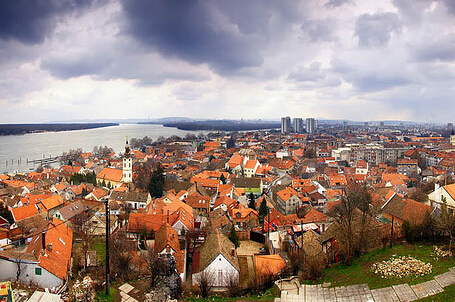
Full name: The Republic of Serbia
Area: 88,400 square kilometers (10,900 square kilometers in Kosovo)
Population: 7.04 million (not including Kosovo, January 2017)
Language: Serbian
Religion: Orthodox
Capital: Belgrade, with a population of 1.28 million (2016)
Geography: Located in the north-central Balkans. It borders Romania to the northeast, Bulgaria to the east, Macedonia to the southeast, Albania to the south, west, Montenegro to the southwest, Bosnia and Herzegovina to the west, Croatia to the northwest, and Hungary to the north.
Head of state: The President of Serbia is elected to a five-year term. The current president is Aleksandar Vučić since May 2017.

The Church of Saint Sava in in Belgrade
Politics: The political situation remained generally stable. The country held parliamentary elections in April 2016, forming a coalition government mainly consisting of the Serbian Progressive Party (SNS) and the Socialist Party of Serbia (SPS). In April 2017, a presidential election was held, the then-prime minister and SNS leader Aleksandar Vučić was elected and took office on May 31. On June 30 that year, Ana Brnabić became prime minister.
Currency: Serbian Dinar (RSD) 1$≈105
GDP: 4.2619 trillion RSD
GDP per capita: 603,816 RSD
Inflation rate: 1.2 percent
Unemployment rate: 15.3 percent
Relations with China:
China established diplomatic relations with the former Yugoslavia in 1955. After the disintegration of Yugoslavia, the Chinese embassy in the former Yugoslavia was renamed Chinese Embassy in Serbia and Montenegro (2003) and Chinese Embassy in the Republic of Serbia (2006).
In 2009, China and Serbia announced the establishment of a strategic partnership. In 2013, the two heads of state signed the joint statement to deepen strategic partnership. In 2016, the heads of state of the two countries signed the joint statement on building comprehensive strategic partnership. The two foreign ministries have maintained sound cooperation and consultation mechanism.
The two countries had close political exchanges at various levels. From August 25-29, 2013, then Serbian President Tomislav Nikolic paid a state visit to China. He and his Chinese counterpart Xi Jinping held talks, signed the Joint Statement Between the People's Republic of China and the Republic of Serbia on Deepening Strategic Partnership, and witnessed the signing of documents on economic, agricultural, communications and other areas of cooperation.
In March 2014, the Serbian president, prime minister, and foreign minister all sent letters to their Chinese counterparts to express condolences to the Kunming terrorist attack.
In September 2015, then Serbian president Nikolic met with Chinese President Xi Jinping in Beijing, when he attended the parade in Beijing marking the 70th anniversary of the end of World War II on September 3. In November that year, then Serbian Prime Minister Aleksandar Vučić paid an official visit to China and attended the Fourth Summit of China and Central and Eastern European Countries (16+1) in Suzhou, East China's Jiangsu Province.
From June 17-19, 2016, Chinese President Xi Jinping paid a state visit to Serbia and signed a joint statement with Serbian counterpart on building comprehensive strategic partnership.
In March 2017, then Serbian President Tomislav Nikolic paid a state visit to China.

Chinese President Xi Jinping meets with Serbian President Aleksandar Vucic at the Great Hall of the People in Beijing, capital of China, September 18, 2018. (Photos: Xinhua)
In September 2018, Chinese President Xi Jinping met with Serbian President Aleksandar Vučić in Beijing, who was in China to attend the Summer Davos Forum annual meeting in Tianjin.
(Sources: Xinhua, fmprc.gov.cn)


